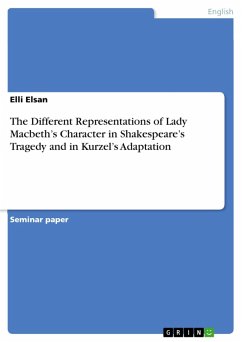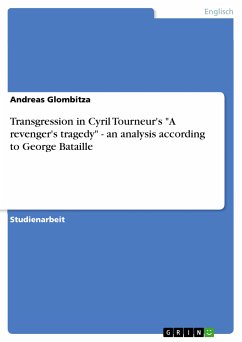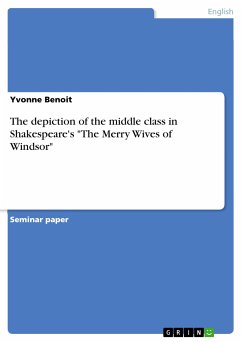Seminar paper from the year 2004 in the subject English Language and Literature Studies - Literature, grade: 2.0, Ernst Moritz Arndt University of Greifswald, language: English, abstract: This paper deals with the question how women are depicted in English Renaissance drama, exemplified by the women inThe Revenger's Tragedyand in Shakespeare'sHamletandMacbeth.It shall be examined which functions women in the drama fulfill and which conclusion their status allows. Of particular interest will be the concept of the 'unruly woman', who unites characteristics like mysteriousness, seductiveness and inexplicability. The analysis will show that none of the examined characters Gertrude, Ophelia, Lady Macbeth, Lady Macduff, Gratiana, Gloriana, Castiza, Antonio's wife and the Duchess are shaped plainly but ambivalently. Therefore, no explicitly good or evil female character can be identified. With regard to the widespread misogynistic view on women in the 17thcentury, this speaks for the dramas' authors. However, various negative human features that are presented as typically female, will be taken into consideration and questioned as the basis for discussing the issue whether the dramatists can be rather regarded as feminists or sexists. Moreover, a short insight into the potential origins of the (male) perception of the Renaissance woman is presented and shall clarify and explain the circumstances, in which rather 'modern' matters like woman's selfperception, ambition and emancipation, self-determination and reputation. The paper's aim is to expose what the general way of women's depiction actually is and to investigate if the dichotomy between men and woman can be portrayed in the simplified way of depicting female weakness versus male strength. Furthermore, it shall be focused on the strikingly depicted male superiority and dominance in the plays, its nature, consequences, the connected illusions and, maybe, underlying weaknesses. Additionally, the analysis will focus on questions suggesting themselves such as the discussion of woman's habitual death in Renaissance drama, the identification of the different angles of depiction and, above all, the inquiry of the thesis if women are really depicted as morally and socially inferior to men and, if yes, whether this can be justified.
Dieser Download kann aus rechtlichen Gründen nur mit Rechnungsadresse in A, B, BG, CY, CZ, D, DK, EW, E, FIN, F, GR, HR, H, IRL, I, LT, L, LR, M, NL, PL, P, R, S, SLO, SK ausgeliefert werden.









